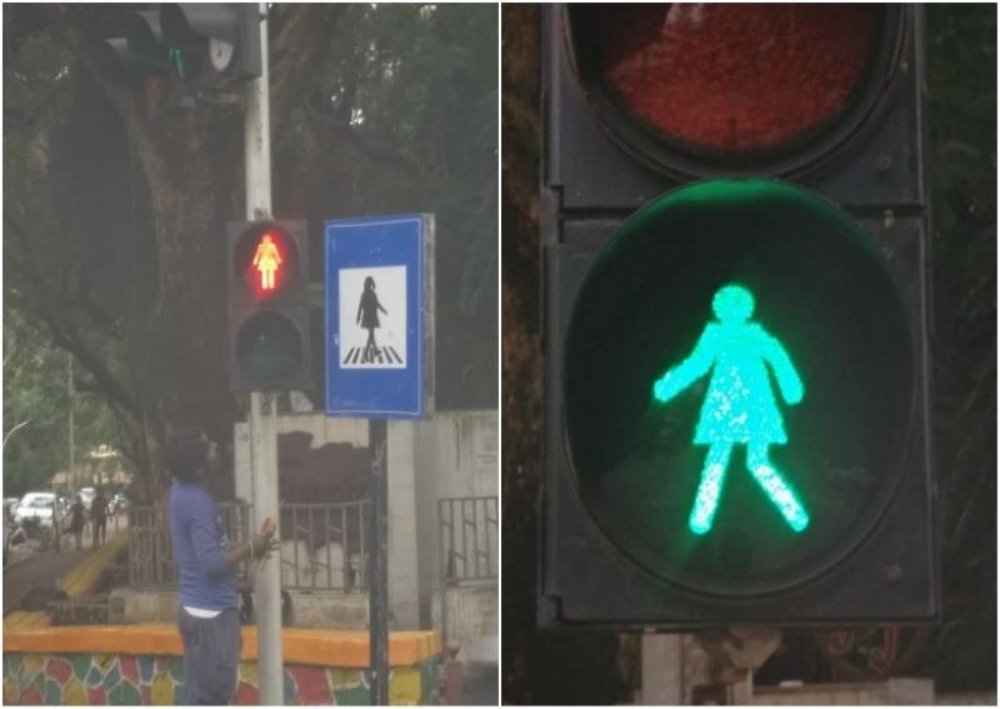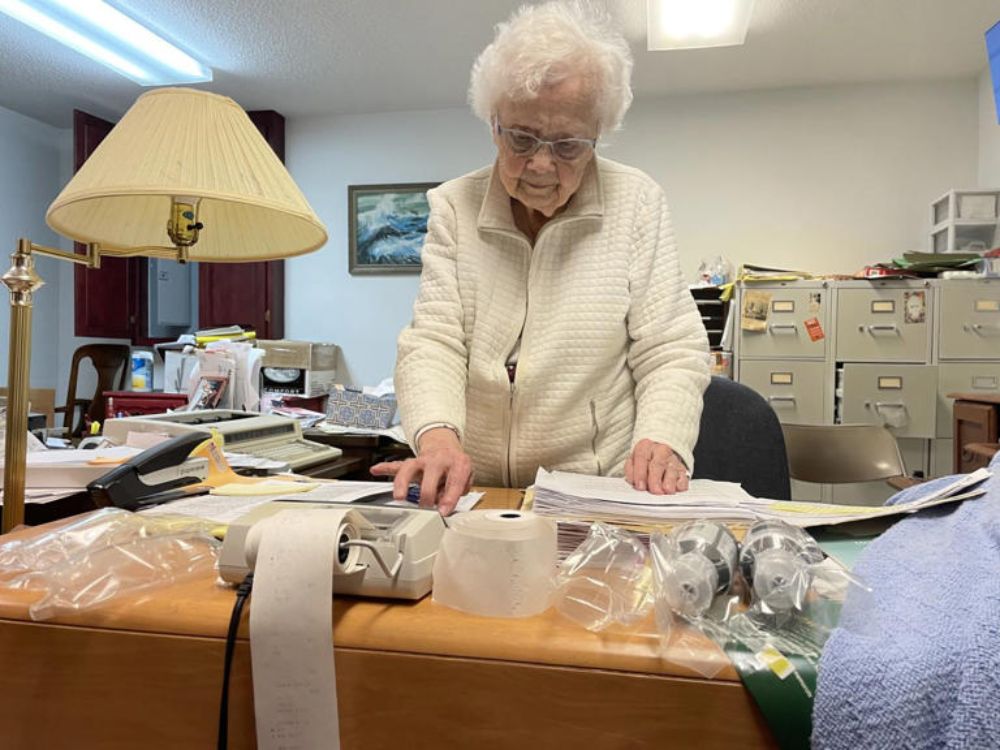印度孟買(Mumbai)市民和遊客,最近可能發覺街上有點不同。原來當地市政府將市內部分的交通燈的圖像,改成穿上裙子的女性的造型。
這是由孟買所屬的馬哈拉施特拉邦(Maharashtra)旅遊和環境部長阿迪雅‧薩克雷(Aaditya Thackeray)主導「文化之脊」(Culture Spine)計劃其中一個項目,希望從社會文化層面去提升女性地位。他形容,從一個小小的意念去彰顯性別平權,意義深遠。首批改裝共涉及240個交通燈,成為印度全國首個有類似裝置的城市。
印度塔塔社會科學研究院(Tata Institute of Social Sciences)的學者席爾帕.帕德(Shilpa Phadke)說:「如果下一代的小女孩能在有女性標誌的環境中成長,將對她們傳達出一個微小但有力的訊號,就是女性也屬於公共領域的一份子。」不過也有市民認為,此舉根本無助解決孟買的婦女罪案,包括家庭暴力和性騷擾等。
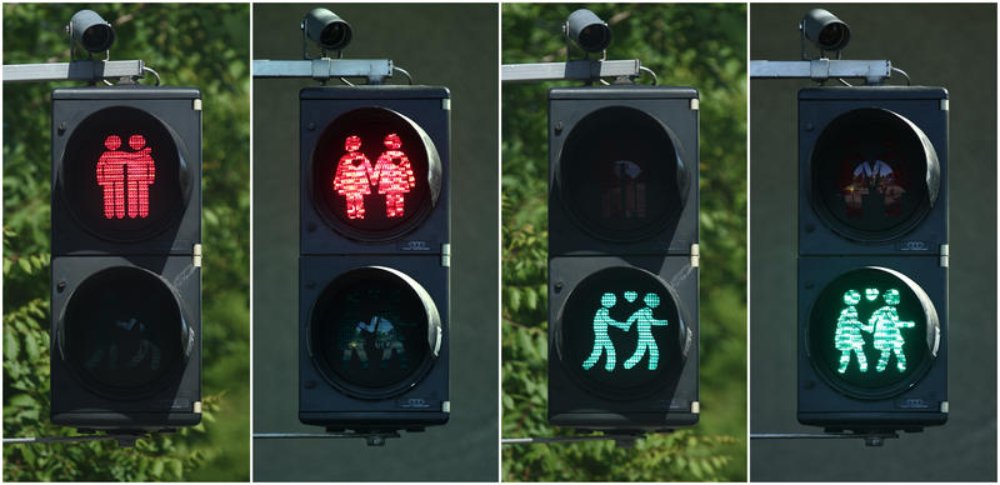
2012年,一位印度婦女在巴士上被輪姦後,激起了社會對城市規劃的討論,例如減少昏暗的街道、暗角和偏遠的巴士站,以保障獨行和夜歸婦女的安全。
根據印度國家犯罪統計局(The National Crime Records Bureau, NCRB)的資料,人口達2,000萬的孟買,是印度全國針對婦女罪案第二多的城市。在2018年,當地共發生6,058宗侵害婦女的罪案,比2017年的5,453宗增加了10%;而首都新德里,同類罪案由2017年11,542宗,稍微上升至11,724宗。
西班牙的馬德里、奧地利的維也納和德國多國城市都裝置了的女性形象的交通燈號。
例如維也納在2015年將市內500個交通燈的半數改為女性,還提供六種造型,包括孕婦、女性長者、非裔髮型的婦女和兩位手牽手的女性。
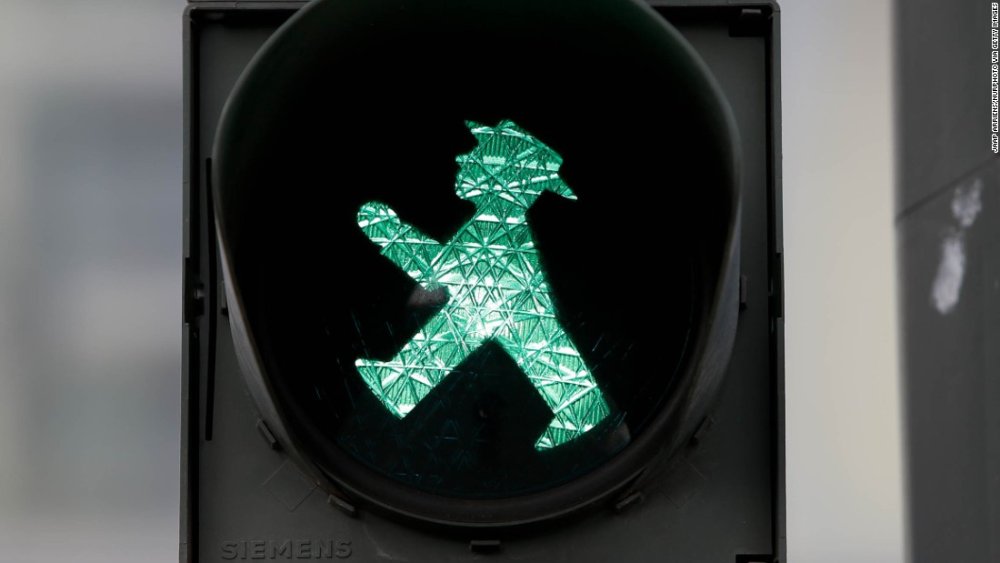
德國的交通燈人物造型較為多樣化的。在2015年,慕尼黑為響應同志大遊行活動,將市中心部分行人交通燈的公仔,換成女性、同性戀或跨性別人士的標誌。設計這些交通燈號的馬庫斯.赫克豪森(Markus Heckhausen)認為,這個意念源自柏林的「Ampelmännchen」(意思是紅綠燈人)。他直言:「在他之前,沒人在乎綠公仔是甚麼樣子。」
柏林的交通燈,相信是全國最著名的交通燈。在1961年前東德一位心理學家卡爾.佩格勞(Karl Peglau)設計了一對頭戴扁帽小紅人和小綠人,是為交通燈公仔的濫觴。柏林人還將這對小人製成了形形色色的T恤、水杯、開瓶器、雪櫃門貼和鎖匙扣等,是柏林最熱門最的旅行紀念品之一。
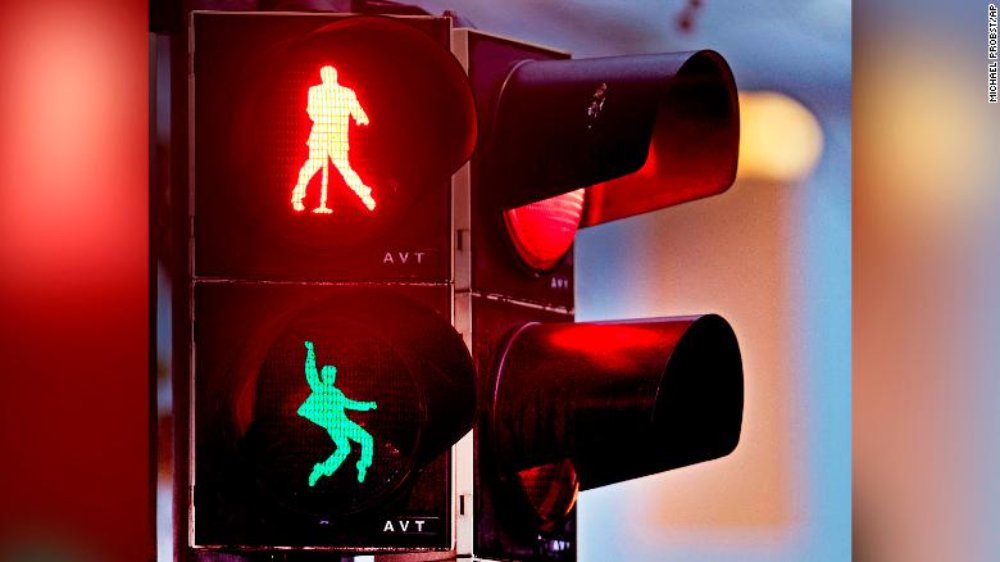
此外,美茵茲(Mainz)在2016年把全國聞名的向6位當地知名的卡通人物放到紅綠燈裏去。在奧格斯堡(Augsburg),當局則以當地最膾炙人兒童木偶劇院角色卡斯佩爾(Kasperl)作為交通燈的公仔,並只以綠色顯身。史特加(Stuttgart)市內的紅綠燈則是西南德意志電台的吉祥物「馬駒和小猴」(Pferdle und Äffle)。
2017年,澳洲墨爾本建議在交通燈加入女性形象,部分居民認為這種以穿裙子的人代表女性,是一種倒退和含有「異性戀正常化」的意思。更有人認為不如將公帑用於推廣性別平等的措施。回到孟買,到底這種小修改,對城市發展有何影響,我們不妨拭目以待。

